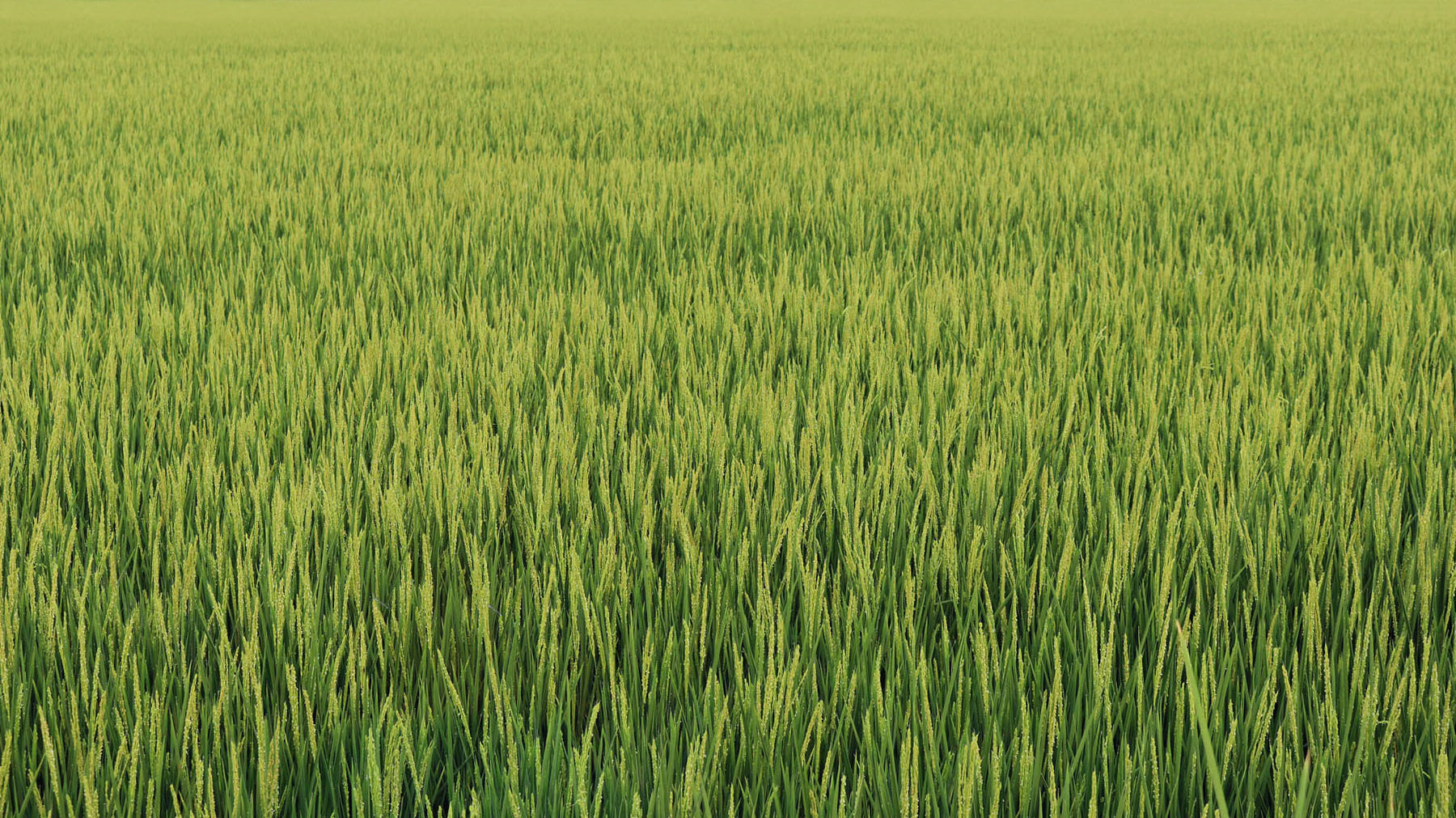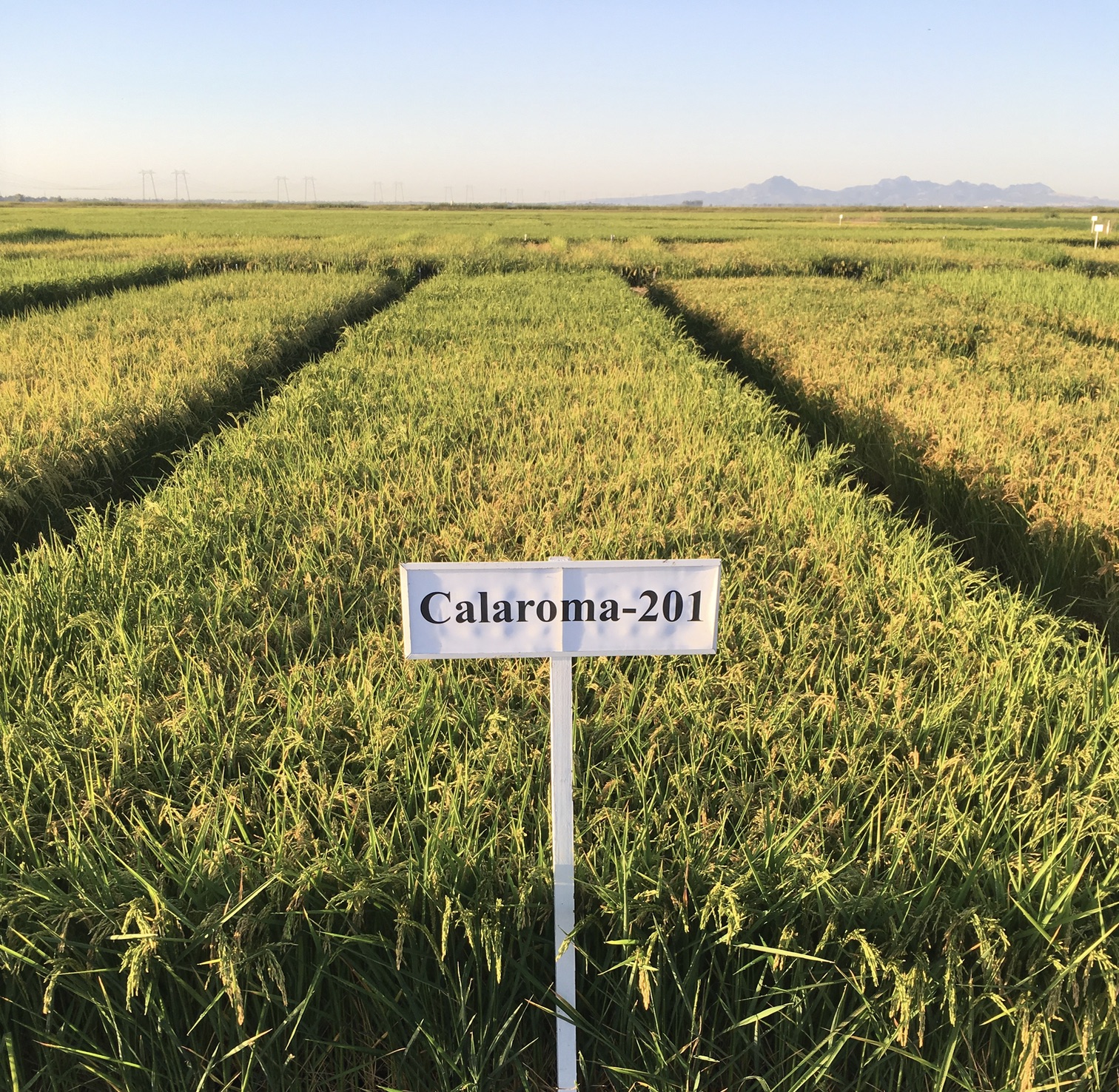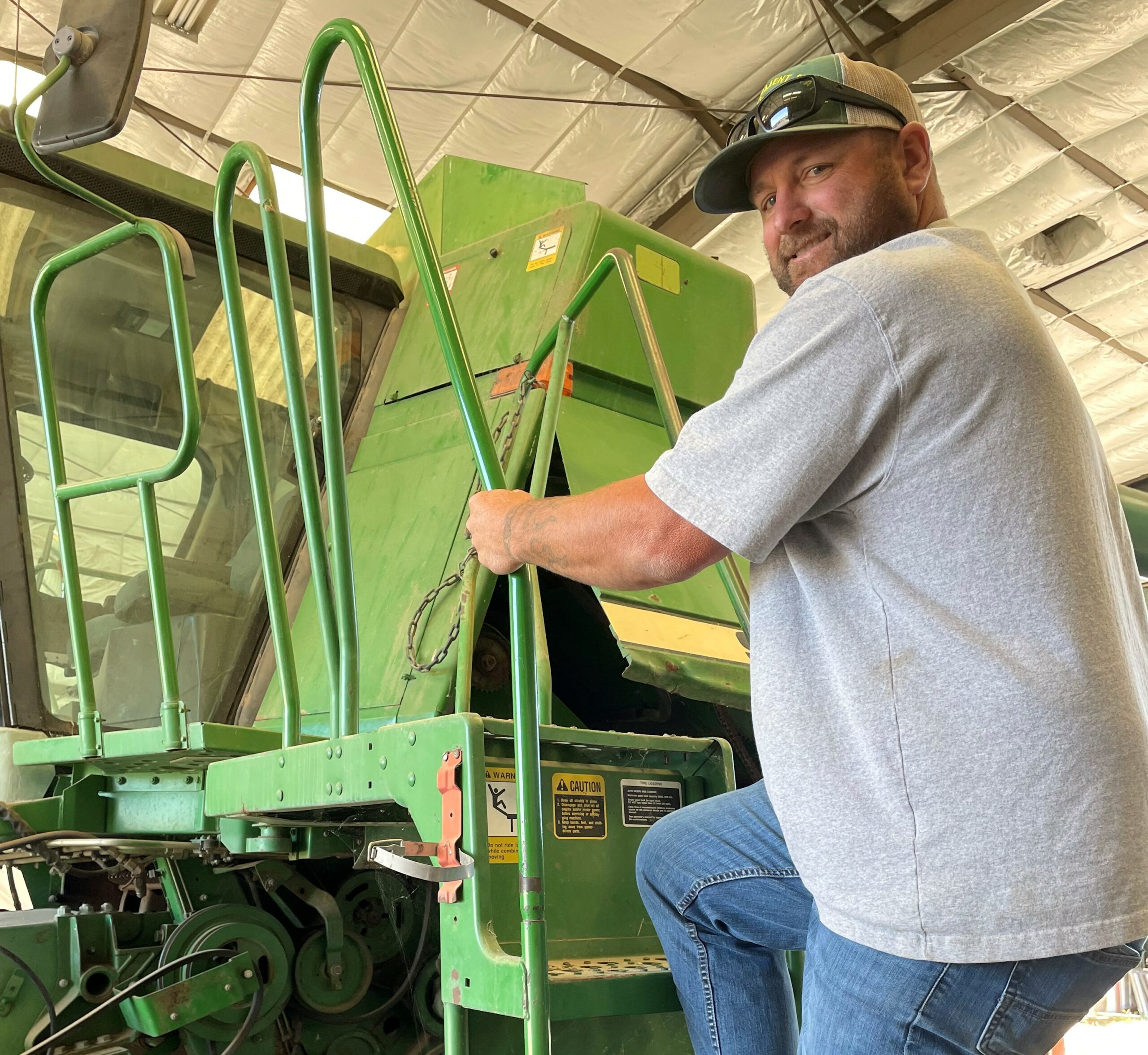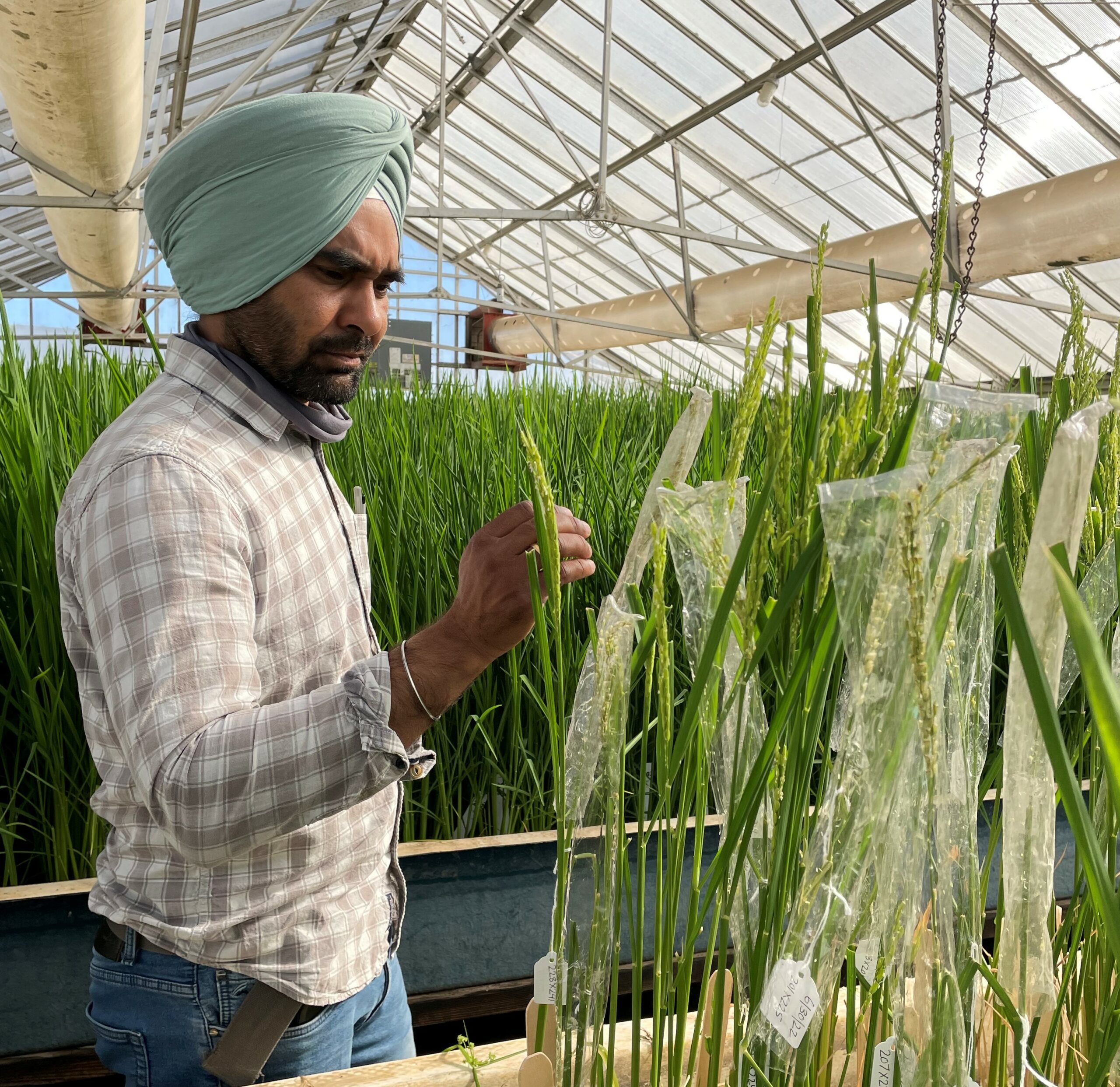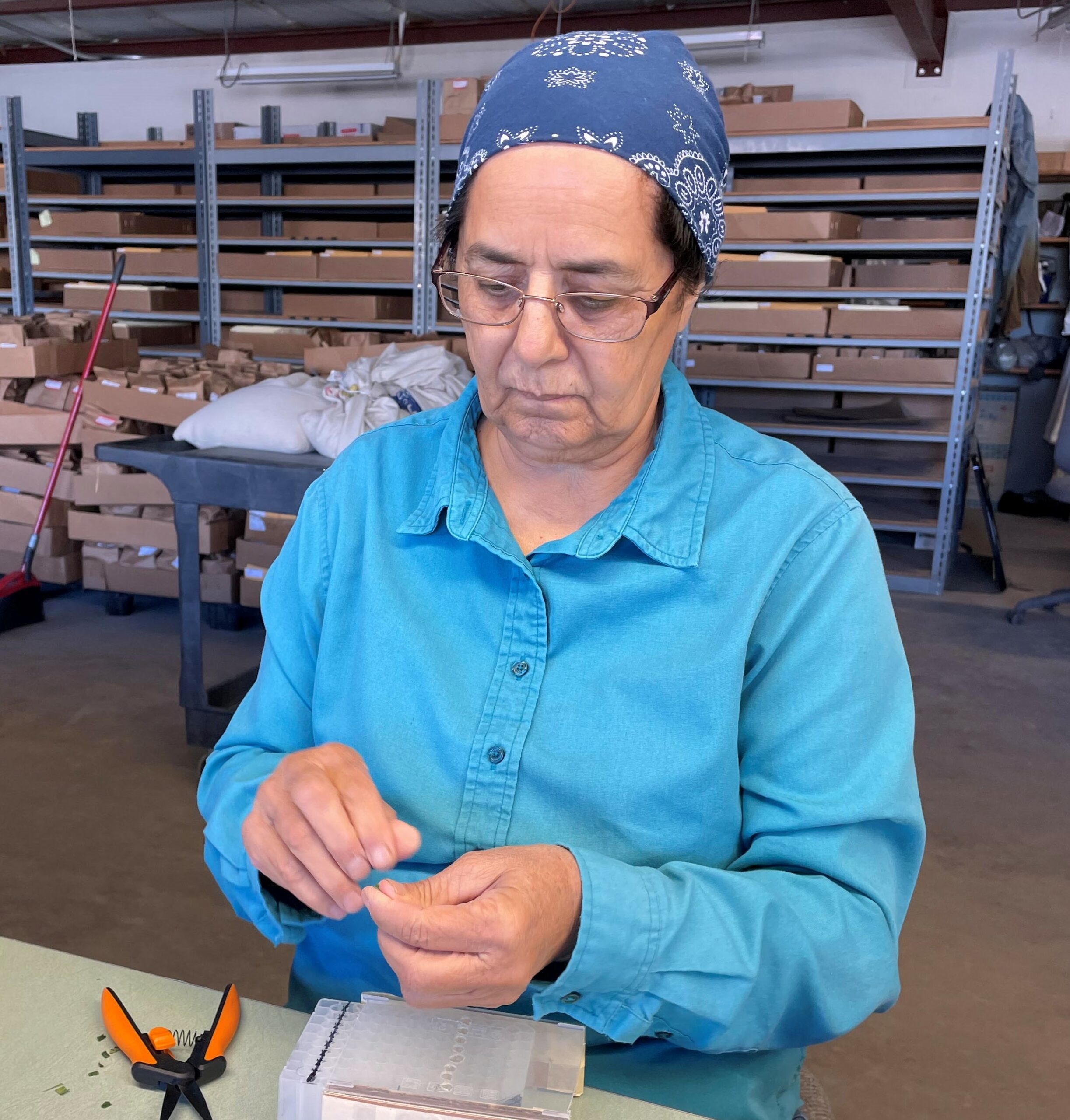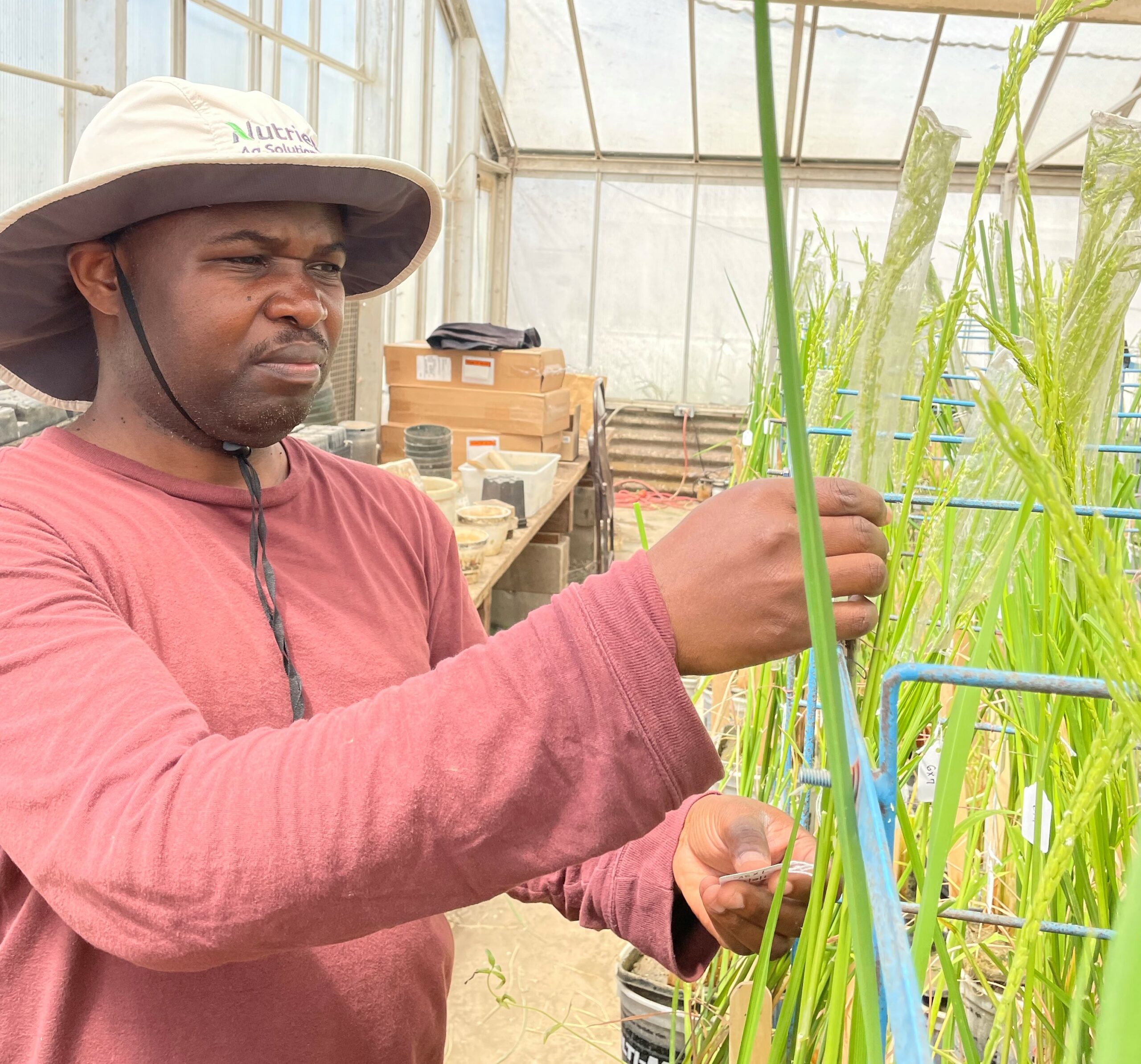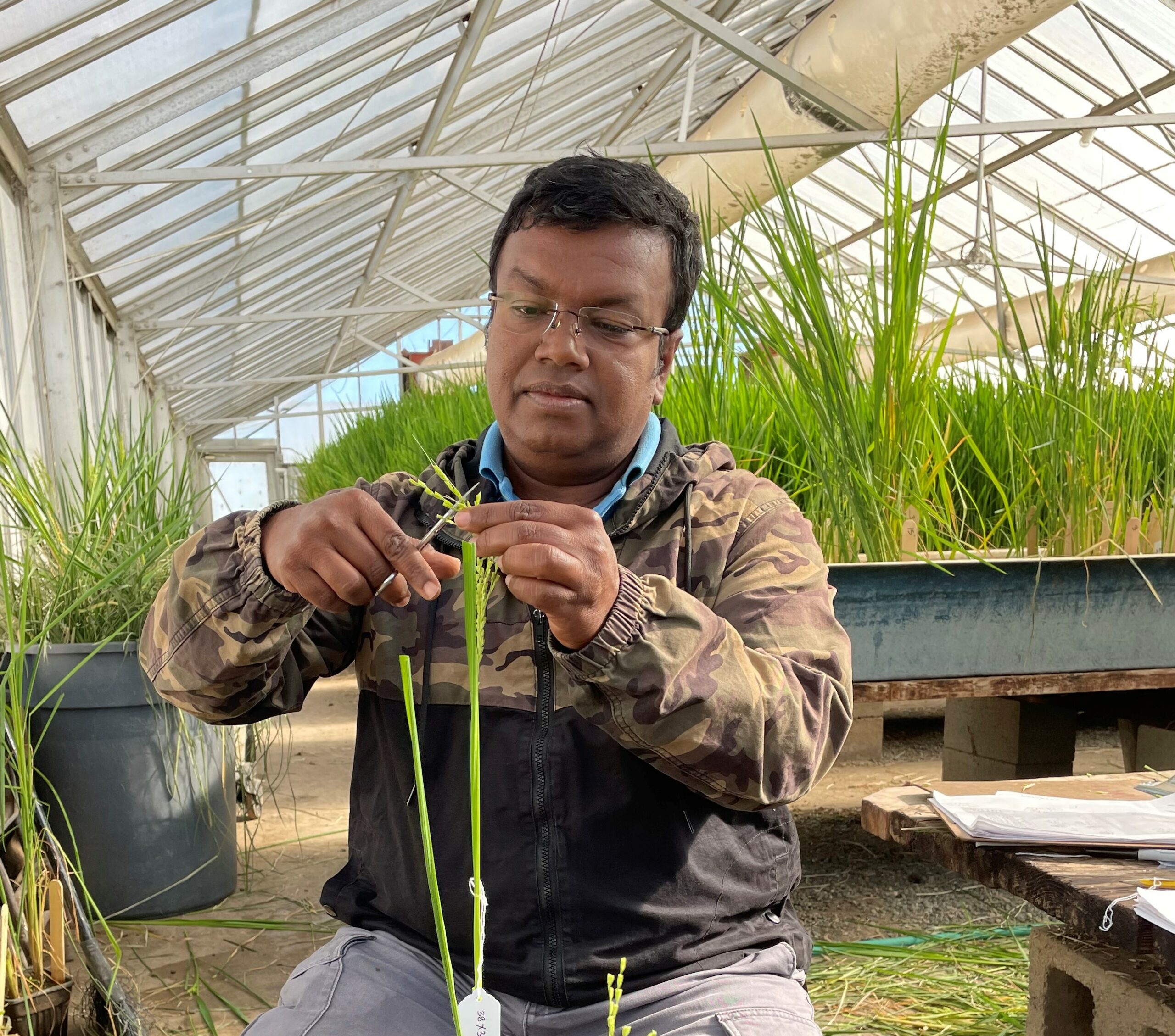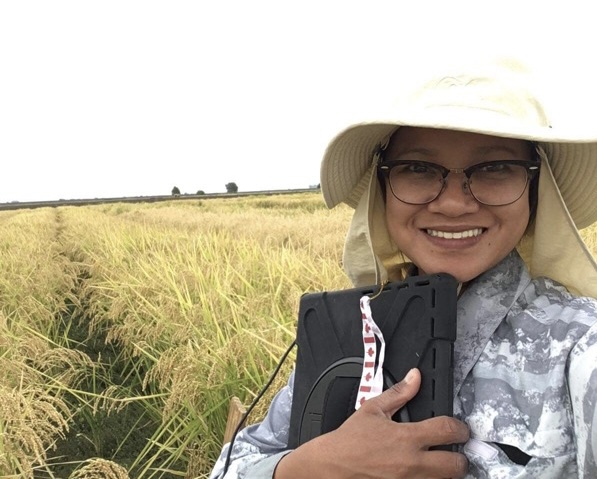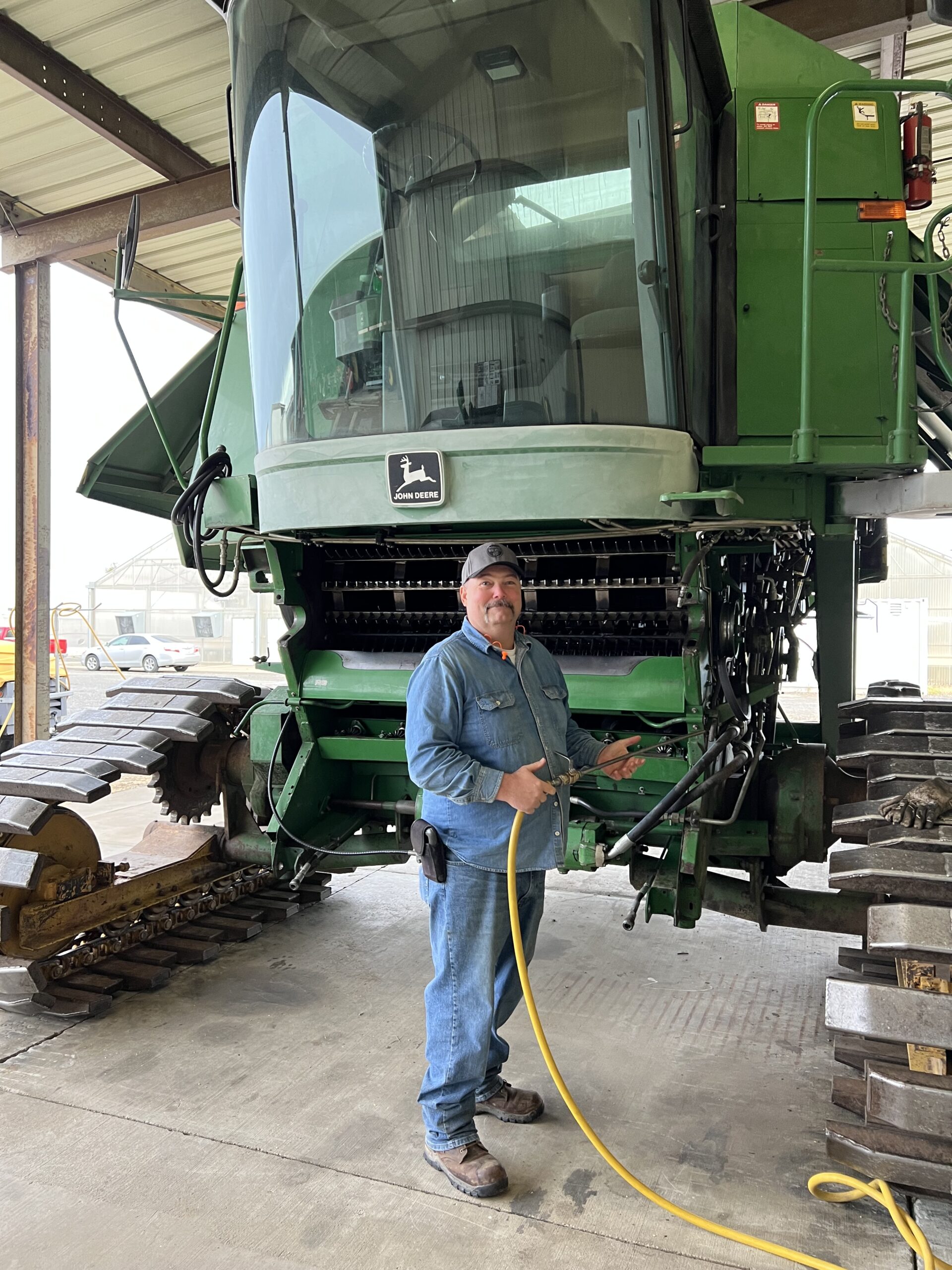Rice Variety Profile for Calaroma-201 (CJ-201)
RES Rice Varieties
Variety: Calaroma-201 (CJ-201)
- Former ID: 15Y84
- Year: 2018
Pedigree and Breeding
Calaroma-201 or CJ-201 is a high-yielding, semi-dwarf, early maturing, glabrous, Jasmine-type long grain and was a product of a cross made in the summer of 2009 at the Rice Experiment Station in Biggs, CA, designated as R40709. Detailed information on 15Y84 pedigree is: R40709=07Y603/JES; where 07Y603=02Y710/99Y529; 02Y710=00KDMX3-3; 99Y529=90Y563/3/L202/QC//L2O2. The official pedigree designation for Calaroma-201 is “00KDMX3-3/4/90Y563/3/L202/QUIZHAW/ L2O2/5/JES”. L-202 is an early maturing California long grain variety released by RES in 1984 and is no longer in commercial production. 90Y563 is an advanced line from the Long Grains Project at RES. Quizhaw is a high yielding rice introduction that came from China. 00KDMX3-3 is photoperiod-insensitive mutant line derived from a Thai Jasmine variety Khao Dawk Mali (KDM). JES is a mutant of KDM released by the USDA-ARS and University of Arkansas.
Calaroma-201 is a high-yielding, semi-dwarf, early maturing, glabrous, Jasmine-type aromatic long grain rice developed as an excellent alternative to imported Thai Jasmine. It the first of its class to be released by RES to the California rice industry and evaluated to be of acceptable quality by a number of external quality evaluators in the food serving sector, Asian rice consumers, farmers and marketing organization.
Agronomic Characteristics
The overall grain yield of Calaroma-201 across 22 experiments in the SW test averaged 9,450 lbs./acre compared to 9,310 and 8,890 lbs./acre for L-206 and A-202, respectively, with overall 3-year yield advantage of 6.3% and 1.5% over A-202 and L-206, respectively). Calaroma-201 is comparable to L-206 and A-202 in terms of overall seedling vigor score and lodging scores. It reaches 50% heading about 5 days later than L-206 and 1 day later than A-202, slightly taller than L-206 but shorter than A-202 by about 8 cm. Calaroma-201 area of adaptation is similar to L-206, but as with other RES-bred long grains, it is not recommended in colder rice areas.
Milling and Quality
The milled rice grains of CJ-201 has a 1000-grain weight of 19.72 grams compared to 19.94 and 22.27 grams for L-206 and A-202, respectively. Though its grains are lighter, CJ-201 however has a longer and narrower grains compared to L-206 or A-202, putting the length to width ratio of milled rice to 3.58.
Milling characteristics is an important component of the overall quality of a rice variety. Three-year data showed that the head rice yield of CJ-201 when harvested at 19-21% moisture is 60/67 (head/total) compared to 61/70 and 61/68 for L-206 and A-202. Also, the percentage of total rice of CJ-201 appeared to be lower compared to the checks.
RVA and Quality Evaluation
The mean apparent amylose content of CJ-201 is 15.76% compared to 22.41 and 22.38% for L-206 and A-202, respectively. Having low amylose content and low gel type. CJ-201 cooks softer and stickier compared to a conventional long grain cooking characteristics like L-206 and L-207
Based on the results of the RVA, CJ-201, compared to L-206 and A-202, is characterized by having higher peak viscosity and breakdown values, lower final viscosity value, and a negative setback, indicating softer and stickier cooking characteristics. Internal and external cooking and tasting evaluation confirms the differences in cooking quality of CJ-201and the regular or aromatic long grains. Feedback on eating quality by Asian consumers of imported Jasmine rice is also favorable, indicating that CJ-201is acceptable to the market and can be an excellent alternative to Thai Jasmine.
CJ-201: Amylose, protein content and gel type of CJ-201, L-206 and A-202 measured by USDA and CA Wheat Commission
CJ-201: RVA profile of CJ-201, L-206, and A-202 measured at RES
Blanking and Disease Screening Test
In San Joaquin, CJ-201had an observed blanking percentage of 3.17% in 2017 compared to 2.42 and 2.17 for L-206 and A-202, respectively. The GH test conditions in 2017 are unusually harsh, registering unusually high blanking scores of test entries for all grain types in general. Nonetheless, given the general sensitivity of the long grains to cold temperatures compared to short and medium grains. CJ-201are recommended only in warmer areas or those where the long grain L-206 or A-202 performed well.
Calaroma-201 reaction to stem rot disease is in between L-206 and A-202, L-206 being more susceptible. It is however more susceptible to aggregate sheath spot. 15Y84 is susceptible to blast, as L-206 and A-202.
